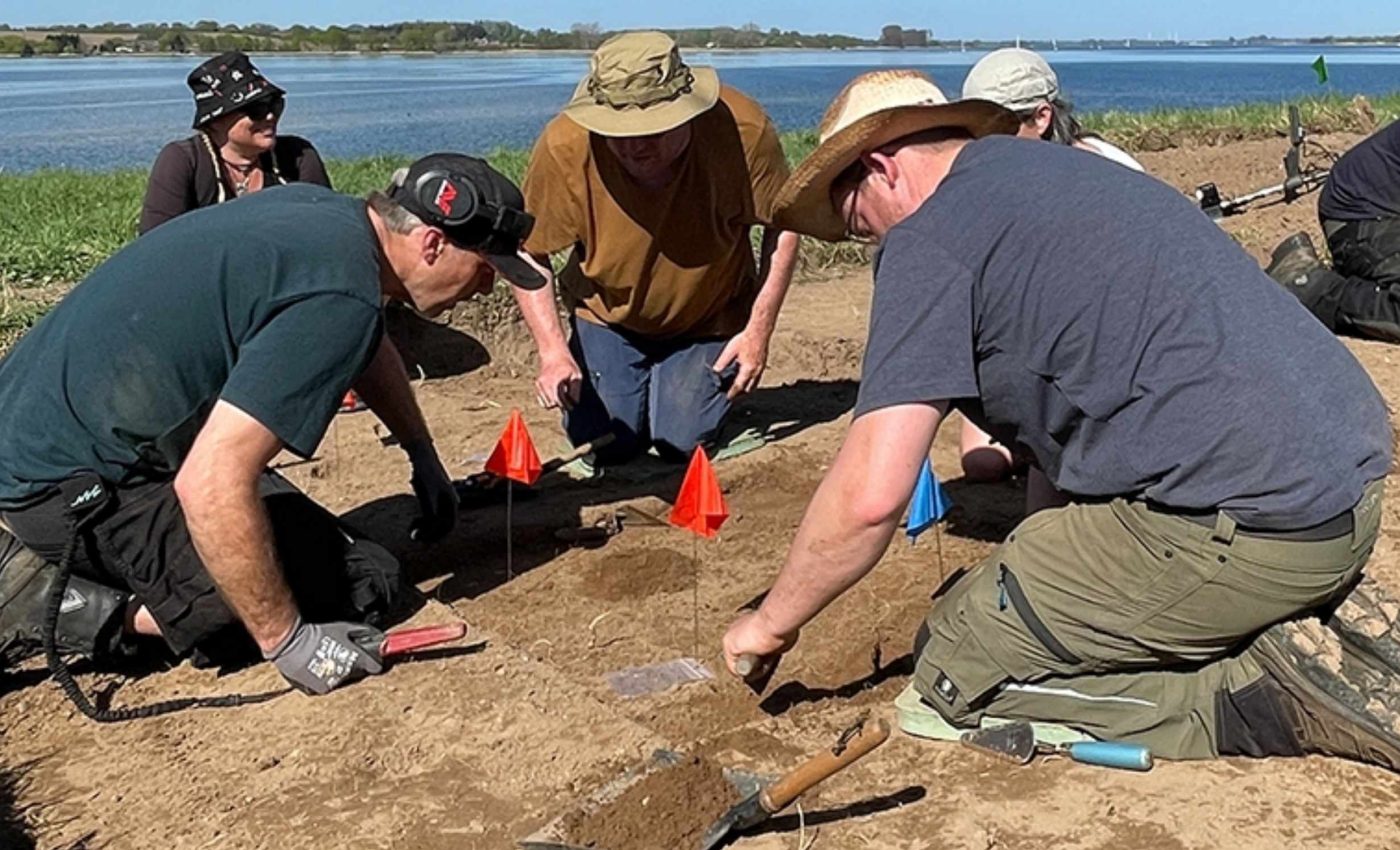
Hiker with a metal detector finds a Viking treasure hoard
On the banks of the Schlei in northern Germany, archaeologists report discovering a 10th century Viking hoard.
“Whether it is actually a hidden depot or whether there was a settlement nearby cannot be said for certain at this stage,” said Birte Anspach, spokesperson for the State Archaeological Office of Schleswig-Holstein.
The find sits near Haithabu, a major Viking Age port, and fieldwork was coordinated by the Schleswig-Holstein State Archaeological Office. The location ties local history to trade and belief shifts over many centuries along a busy waterway.
What the Viking hoard tells us
This Viking hoard features hacksilver, scrap silver used as bullion for weight trade, alongside cut coin fragments. The pieces are worn and chopped, which fits a money by weight system that valued silver by mass.
There are fragments of Arabic dirham, silver coins minted under Islamic rulers, plus ingot bits and jewelry from many mints. A small filigree cross pendant stands out as a clue to changing beliefs.
Primary coordination came from the Archaeological State Office of Schleswig-Holstein in Germany, which carried out the excavation alongside trained volunteer detectorists at the site.
Small finds nearby add daily life to the picture. A single pottery shard and a whetstone point toward workdays spent sharpening tools and cooking near simple shelters.
Viking trade routes behind the hoard
Dirham silver reached Scandinavia through routes that linked the Baltic to Islamic mints overland and by river. A recent study identifies large ninth century inflows that continued into the 10th century.
Silver often moved by weight rather than face value. Scholars describe a flexible system where chopped rings, ingots, and coin bits served as money.
Merchants carried scales and tiny weights to settle purchases quickly. Many hoards include such gear, which signals trust built on measured metal, not mint marks, in small pouches.
The Schlei opens to the Baltic and funnels ships toward Denmark and the sea. That channel turned Haithabu into a meeting point for traders and travelers and sheltered landings.
A cross in a changing faith
One small pendant may be a cross, which would mark an early step in Christianization, steady adoption of Christianity across generations, or a mixed belief marker. The upside down hang of the piece has prompted debate.
Haithabu is on the UNESCO World Heritage List for its role as a Viking emporium and border complex. The official listing notes dense trade, roads, cemeteries, and a harbor.
Archaeologists remain cautious about why hoards were buried. Hidden depots and nearby homes both fit the evidence at riverfront sites.
Symbols traveled with silver. A pendant shaped like a hammer or cross can signal balancing old rites and a new church.
Why the partnership matters
The discovery came through cooperation between professionals and certified volunteers. Schleswig-Holstein has nurtured this approach through the Schleswig Model, a program that trains detectorists and licenses surveys.
Training covers careful recovery, documentation, and when to call in state teams. Volunteers help widen coverage while keeping context intact.
Rules guard against loss of information as objects leave the ground during recovery. The scheme shows how citizen energy and clear oversight can protect heritage.
A shared code makes reporting fast and consistent regionwide. That structure means small finds can add up to big history when patterns emerge.
Why hoards get buried
A hoard can be a safety plan in hard times. It can also be an offering made for reasons that written sources do not reveal.
People hid silver during threats like raids or sudden conflict. Others may have marked life events by closing wealth in the ground.
Some deposits never surfaced because owners died or moved away. Soil that resists corrosion can keep silver bright for centuries, even close to the surface.
Choices about where to bury also tell stories about homes and travel. Paths, field edges, and sheltering trees pull spots that are easy to find again.
How experts date the cache
Archaeologists narrow dates by the newest coin and its ruler. They also use terminus post quem (‘limit after which’, sometimes abbreviated TPQ), the earliest possible burial date set by the latest artifact.
Metals can hold clues in their lead and trace elements. When analyzed together, source hints and coin legends tighten the story told by the pieces.
Layers in the soil help fix a timeline for a site. Tool styles and craft marks support layers, and they fill out the working life behind the stash.
Teams also study wear on edges, breaks, and clip marks. Those tiny features can separate everyday spending from ritual activity and deliberate display.
Lessons from this Viking hoard
Conservators will stabilize fragile pieces, then specialists will catalog every fragment. Microscopic wear, metal composition, and tool marks can sort payment silver from items worn on the body.
Comparisons with other Schlei finds will test links to nearby workshops and landing places. If a settlement stood here, pottery types and soil chemistry may show that home life and trade met at this shoreline.
Researchers will look for coin stamps and Arabic script on the dirham bits. Any legible mint name or ruler can tighten the date and hint at routes.
Weighing all fragments will show how much silver the hoard held as metal. That total captures wealth as Viking traders often counted it, by weight.
—–
Like what you read? Subscribe to our newsletter for engaging articles, exclusive content, and the latest updates.
Check us out on EarthSnap, a free app brought to you by Eric Ralls and Earth.com.
—–













